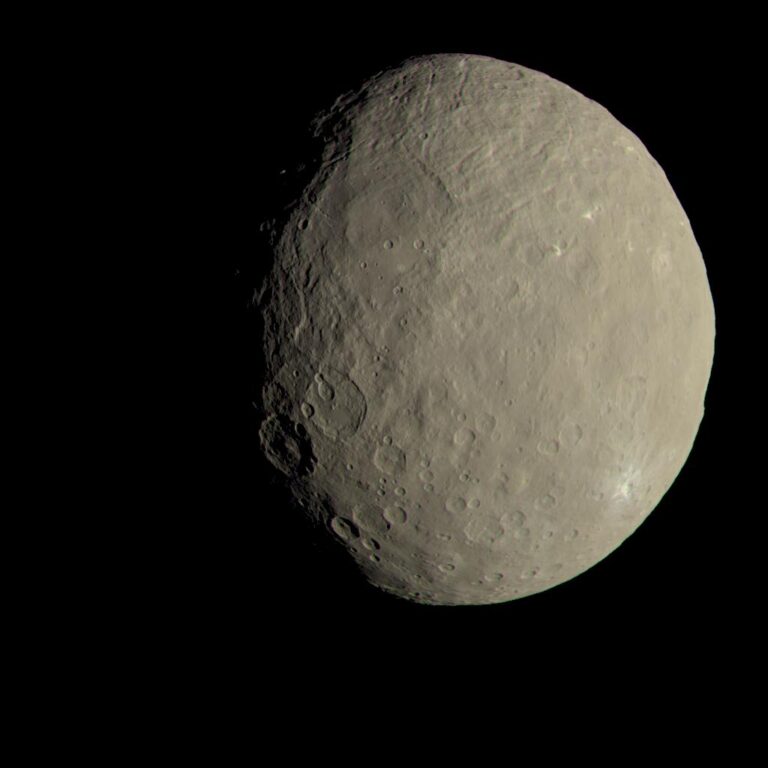Key Takeaways:
The universe is filled with radiation. It’s everywhere.
By radiation, I mean subatomic particles that penetrate your body, or short electromagnetic waves doing the same mischief. Long waves like visible light or microwaves cannot damage genes or cause cancer. But gamma rays and X-rays can break atoms apart; so can speedy subatomic particles, especially heavy ones.
All this stuff flies through space continuously. Supernovae in our galaxy and others create galactic cosmic rays (GCRs), which provide a steady flux of radiation. The Sun’s particles are usually gentler than GCRs, but this totally changes during large solar storms. Fortunately, Earth’s atmosphere blocks most space radiation, but the higher up you live, the more you get.
Radiation is confusingly expressed using a carnival of disparate units like roentgens, grays, Sieverts, rads, and rems — but let’s use millirems (mrem) for this article. The average person receives 360 mrem a year, of which more than 80 percent comes from natural sources. (People who get periodic CT scans receive far more, and such medical tests are so common in the U.S. that the population’s annual radiation exposure is higher — 620 mrem.) Some sources create significant hazards, like radon gas oozing into basements. Others are measurable but truly minor, like that from smoke alarms. “Radiation” creates much misunderstanding and unnecessary fear: Who would guess that you get more from eating one banana (0.01 mrem) than by living within 50 miles (80 kilometers) of a nuclear power plant for an entire year (0.009 mrem)?
While background radiation is responsible for some of the spontaneous tumors that have always plagued the human race, scientists debate whether low doses pose any risk. Tibetans and Peruvians who live at extreme altitudes and thus receive more radiation do not have higher rates of leukemia. On the other hand, professional pilots and flight attendants suffer a 1 percent greater cancer occurrence rate than the rest of us.
You can achieve major radiation reductions by getting your basement checked for radon or asking your doctor whether you really need a CT scan instead of an X-ray. A whole-body CT scan can give you the same radiation that Hiroshima survivors more than a mile from ground zero received.
IF A ONE-WEEK MOON EXCURSION IS RISKY, WHAT ABOUT THE ONE-YEAR ROUND-TRIP TRAVEL TIME TO MARS?
Only 24 humans ventured beyond our atmosphere and our magnetosphere, which protects humans on Earth’s surface from much harmful space radiation. That was during the Apollo program from 1969 to 1972. They all saw spurious streaks or flashes of light, like meteors, cross their visual fields once a minute. Turns out GCRs — mostly protons traveling a healthy fraction of light-speed — continually ripped through their brains.
Yet the Apollo guys were lucky. Not a single major solar storm erupted during any of their nine excursions beyond Earth’s magnetosphere. Scientists didn’t even know about the fiercest solar storms when Armstrong and Aldrin walked Tranquillity Base, since these coronal mass ejections (CMEs) weren’t identified until 1971, two years later.
If a one-week Moon excursion is risky, what about the one-year round-trip travel time to Mars? Even discounting the considerable radiation exposure while on the Red Planet, which has neither a magnetosphere nor appreciable atmosphere, how dangerous is a long trip in a flimsy spacecraft?
We finally have the answer, sort of.
Two years ago, the Mars Science Laboratory began its 253-day journey to Mars to deliver the Curiosity rover. En route, the first-ever onboard radiation detector, an instrument acronymically called RAD, measured the radiation environment inside the spacecraft. During RAD’s martian odyssey, not a single major solar storm went off, so the instruments mostly sampled the GCR flux rather than the human hazard during brutal CMEs or solar flares.
The results were not encouraging.
“In terms of accumulated dose, [traveling to Mars] is like getting a whole-body CT scan once every five or six days,” said the Southwest Research Institute’s Cary Zeitlin, a principal scientist involved with the measurements. It would be like a Hiroshima survivor experiencing that event two dozen times over.
GCRs are mostly highly penetrating particles that are not stopped by a spacecraft’s modest shielding. “A vehicle carrying humans into deep space would likely have a ‘storm shelter’ to protect against solar particles. But the GCRs are harder to stop, and even an aluminum hull a foot thick wouldn’t change the dose very much,” said Zeitlin.
The RAD data showed an average dose equivalent of about 66,240 mrem for a future martian round-trip mission — what the average person gets in 184 years (107 years even for those radiation junkies in the U.S.). It would increase one’s fatal cancer risk by 3 or 4 percent. This did not include major solar radiation or what would be received on the martian surface.
“This issue will have to be addressed … before humans can go into deep space for months or years at a time,” said Zeitlin. On a more upbeat note, recent studies show lightweight plastic is a more effective shielding than heavier metal.
Bottom line: Such trips would be worrisome but not automatically lethal.
Bananas, anyone?
Contact me about my strange universe by visiting http://skymanbob.com.










